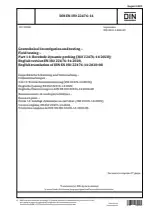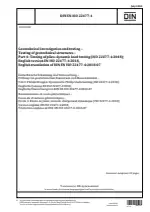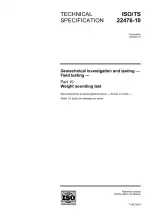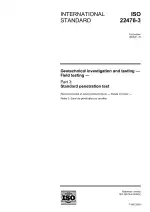Geotechnical Investigation and Testing - Field Testing - Part 10: Weight Sounding Test
Also Known As:
The DIN EN ISO 22476-10 standard focuses on the weight sounding test (WST) as a method for conducting geotechnical investigations. The standard outlines the requirements and guidelines for performing this test, which is an important part of ground investigations in accordance with EN 1997-1 and EN 1997-2.
The WST involves the use of a gauge plate with a known weight that is impacted onto the ground surface. The deflection of the gauge plate is then measured to assess the properties and characteristics of the soil. This test is used to determine the relative density, consistency, and stratification of the soil, as well as to evaluate the bearing capacity and settlement potential.
The standard provides detailed instructions on the equipment and procedures required for conducting the weight sounding test, including the selection of the appropriate gauge plate size, impact energy, and test locations. It also specifies the calculations and reporting requirements for interpreting and documenting the test results.
| Descriptors | Bottom layer, Civil engineering, Composition of the ground, Construction, Definitions, Descriptions, Designations, Earthworks, Exploration, Field investigations, Geotechnics, Group of soils, Investigations, Layer structure, Mechanical testing, Probes, Properties, Site investigations, Soil investigations, Soil mechanics, Soil sampling, Soil science, Soil surveys, Soils, Soundings, Strain, Strength of materials, Structural engineering, Subsoil, Test equipment, Testing, Weights, Bottom, Ground, Floors, Reconnaissance |
| ICS Codes | 93.020 - Earthworks. Excavations. Foundation construction. Underground works |
| Language(s) | English |
| File Size | 1.6 MB |








